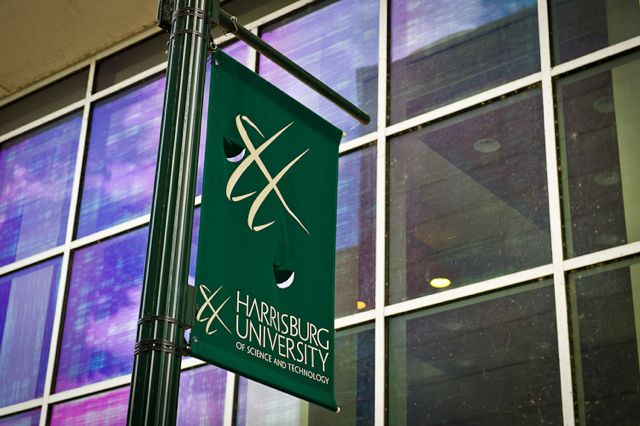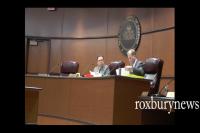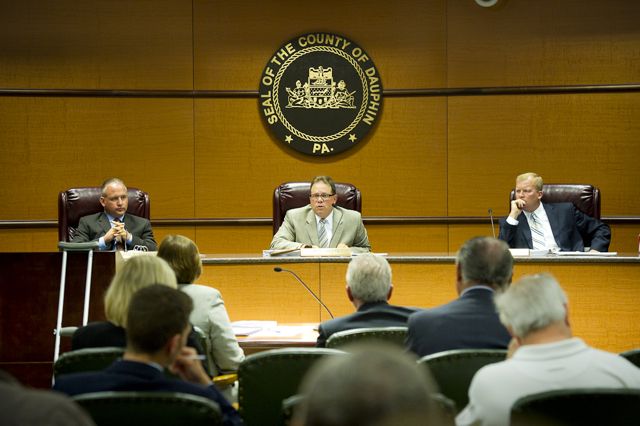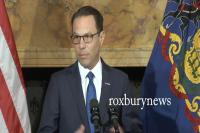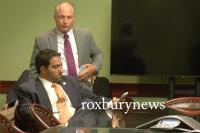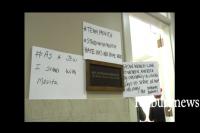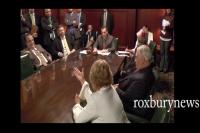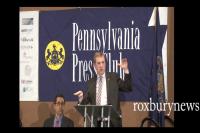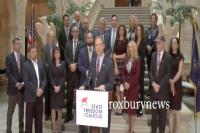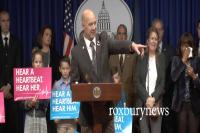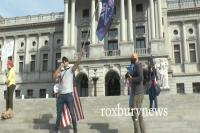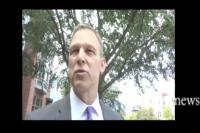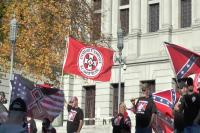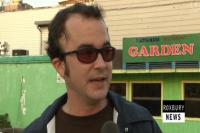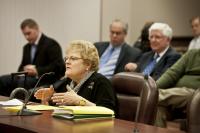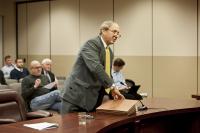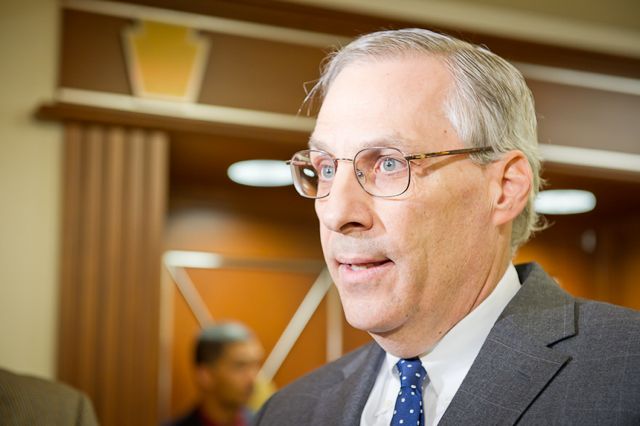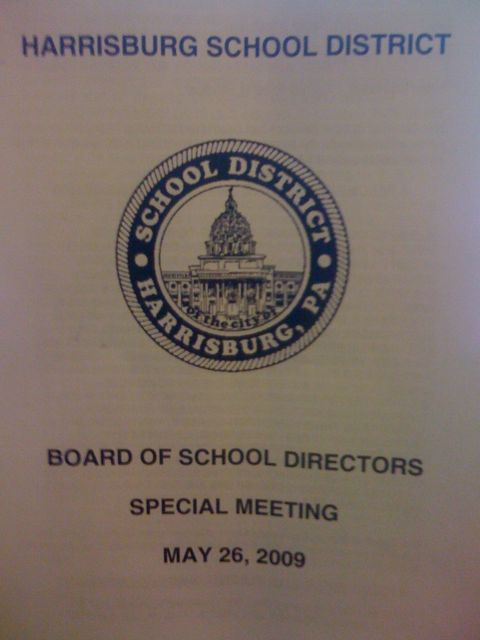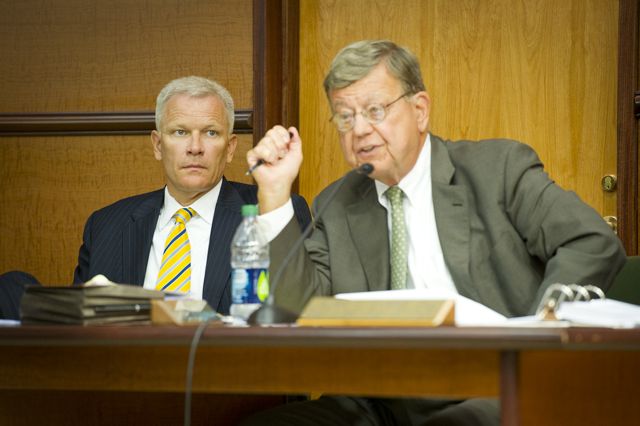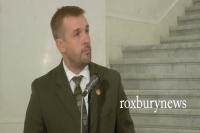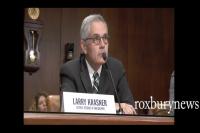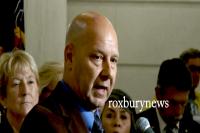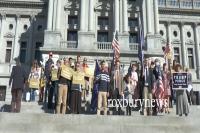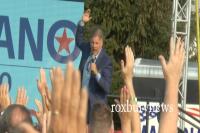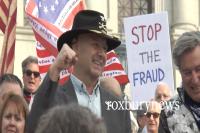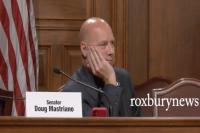"As posted by Tara Leo Auchey on Today's the Day HBG."
POLITICS The Trial: THA vs CIT (Part 1) POSTED BY TARA LEO AUCHEY ⋅ 01/08/2012 ⋅ At a June 2007 presentation to City Council, Andrew Giorgione declared, ?If you would ask me again, should we have done the CIT transaction, that one I would have said no. I would have said no. I?m aggravated that we did that to this day. And I was probably as principle as anybody else pushing for it. I was really scared that, that we were going to run out of funds, that we were going to?we were gonna?.I was scared we were going to wind up where we are. That?s the bottom line.? __________________________________________
Subterfuge
Subterfuge is defined as deceptive strategy used to achieve one?s goal.
That?s what The Harrisburg Authority is claiming against CIT Capital USA, Inc, a Fortune 500 finance group. In January of 2006, CIT and The Harrisburg Authority (THA) entered into a financial agreement for $25 million dollars, money desperately needed to complete the plagued retrofit of the Resource Recovery Facility, a waste to energy plant commonly referred to as the Harrisburg Incinerator.
In January 2008, THA filed suit against CIT asserting that the financial transaction between the two entities is void and unenforceable because of the way in which the deal was done.__________________________________________________________
To the Courtroom
The trial began on Wednesday January 4, 2012, just last week. It has gone on for 3 days in a row, a total of about 23 hours so far. When Court recessed on Friday, former professional consultant to the Incinerator Retrofit project, Dan Lispi was on the stand. He?s the fifth witness in this hearing. The Plaintiff (THA) has called 3 witnesses from its list?former THA legal counsel Andrew Giorgione, former THA Executive Director Tom Mealy, and expert witness David Traeger who testified on the value of the financial transaction between THA and CIT. Dauphin County (joined with the Plaintiff) has brought up expert witness Gerald Yarnall, CPA who testified about the nature of the structure of the transaction, and the Defendant CIT has introduced one of its witnesses already, skipping around to accommodate schedules. Dan Morash who was a the negotiator and overseer of the transaction on CIT?s part took the stand on Day 2 and discussed his meetings with THA?s representatives as they all contrived the deal.________________
By far, the witness on the stand the longest was Andy Giorgione who endured over 7 and half hours of inquisition. He was once a Harrisburg City Solicitor, but at the time of the CIT financing, Giorgione was contracted as ?special legal counsel? for THA. Giorgione had participated in the hiring of Barlow Projects, Inc. in 2000?the company brought in to do the Incinerator retrofit?-as well as in the 2003 THA bond issue. In 2005 Giorgione was upholding similar legal and advisory duties for THA. On the stand, Giorgione defined his role as counsel brought in on ?special assignments.? He was bond counsel on financings, ?primarily incinerator matters,? he said. ?On CIT and other matters, we took the lead versus the THA solicitor.?____________________
His ?special assignment? for THA in the Fall of 2005 was to negotiate a financing deal with CIT and to advise THA on how to proceed. However, Giorgione was sure to emphasize at the beginning of his testimony that he did not give a formal, legal opinion on the CIT matter, most specifically on those things which concerned him the most about the CIT transaction, that is the structure of it; the condition that the repayment would be an obligation as an ?operating expense,? and THA?s responsibility to the Local Government Unit Debt Act, which puts limits on how much debt a municipality can accrue._______________________________________
As Giorgione himself said on the stand, the CIT transaction was ?fairly abnormal in certain aspects.? He also stressed it was a frantic time for THA and the Incinerator Retrofit Project._______________________________________________________
The Backstory
There are certain details of the story that all parties seem to agree on and some details which are indisputable. The CIT financial transaction happened late 2005 into the very beginning of 2006. The first meeting between THA and CIT occurred on December 1, 2005 in New York City and the deal was closed by the 13th of January 2006. Prior to the December meeting, Barlow had informed THA that it was in crisis mode. For the second time, the company had run out of money in the midst of retrofitting the Incinerator. The project was months behind and work had stalled. Barlow?s sub-contractors were not being paid. The company was on the brink of bankruptcy and with the Incinerator in mandatory shut-down, not operating, not generating revenue, the situation was dire.
Barlow informed THA that it needed $25 million more to finish the retrofit. Being near bankruptcy, Barlow was in no position to secure its own financing. Not only could THA not back any loans of Barlow?s, but traditional financing was also out of the question for THA or the City of Harrisburg. Who would finance a non-working, broken, half-repaired public waste to energy facility?
Hoping for a solution, Barlow introduced THA to CIT. Barlow and CIT had a relationship. CIT owned an incinerator in Tulsa, OK and had contracted with Barlow to manage it. The Harrisburg Incinerator saga was very much known to CIT and one of its Senior Managing Directors, Dan Morash.
On December 1, 2005, Andy Giorgione and Dan Lispi on behalf of THA, James Barlow, and Dan Morash met over dinner in New York City to discuss what could be done to secure $25 million so that Barlow could finish the retrofit in Harrisburg.___________________________________________________
Here?s what they came up with.
No loan in ?the classic sense,? to use the words of CIT?s attorney Norman Greenspan of Blank Rome, LLC. Rather, it was to be considered a ?technology sale agreement.? For $25 million, CIT would buy Barlow Projects, Inc?s patented Aireal? Combustion System Technology. Via a Reinstated and Amended Sub-Licensing Agreement, THA would make quarterly licensing fee payments of $750,000 to CIT for the right to use the technology until the amount was paid off 5 years from the transaction date at 7% interest.
CIT had some other terms as well. Two clauses were part of the financing package: 1) ?last money in, first money out and 2) ?hell or high-water.? Quite aware of the fragile state of the Incinerator, CIT demanded that the licensing fee be defined as an ?operating expense.? By doing this, CIT was assured its payments before any debt service payments. From its point of view, CIT may be the group to put money in last to fix the problem, but it wanted to be sure it was in line first to get its money back out. On the stand, Morash of CIT explained it as ?a substantive equivalent of a debtor in possession financing.? As far as the hell or high-water clause, basically that stated that no matter if the Incinerator retrofit went smoothly, got completed or not, the money was still owed with first payment due March 31, 2006.
All parties considered this transaction a ?bridge loan.? Temporary. Barlow assured THA that the retrofit would be finished by March of 2006, months behind schedule but still before the first CIT payment due as well as before the 2003 bond payments were due in June. Once the Incinerator retrofit was complete and the facility was operating efficiently and stably, revenue would be generated and traditional financing would be available. THA would refinance the Incinerator?s debt, satisfy the $25 million financing, and thereby ending all ties with CIT.
There were even plans and a term sheet in place for Barlow to lease the Incinerator from THA once the retrofit was complete. A lease deal of $260 million was conceived which would take care of the Incinerator?s $213 million stranded debt along with CIT?s $25 million. When the future lease deal took place, CIT was to act as ?arranger and underwriter? for of a fee of about $5.5 million.
None of that ever happened and by March of 2007, THA was in default to CIT. The two parties entered into a Forbearance Agreement in June 2007.
THA is claiming that the Forbearance Agreement is also void and unenforceable. CIT argues otherwise stating the Forbearance Agreement does two things. First it cements the responsibility of THA?s original obligation to the transaction and secondly, it takes away THA?s rights to sue CIT.___________________________________________________________
Who Knew?
One of the profound questions of the trial?-who knew about this transaction and who did not? Of course, who knew leads to who is responsible.That?s definitely one of the points of ponder for Federal Judge John E. Jones III (of the Dover School Board Intelligent Design case) as he considers the claim of subterfuge.
Who knew becomes clearer from the exhibits being presented in the Courtroom?-emails, reports, contracts, amendments, resolutions, hand-written meeting notes. Documents the public hasn?t ever seen before.
We see correspondences amongst the architects and participants of this unusual financial transaction. Emails of attorneys for THA and Dauphin County back and forth about what?s going on. Memos from former Harrisburg Mayor Steve Reed?s Business Administrator Linda Lingle in regard to the City?s position on the matter. Comments by THA?s Executive Director Tom Mealy and its solicitor Bruce Foreman conveying apprehension at the quick-moving deal. In one email, Bruce Foreman is expressing concern about the CIT deal and writes if Barlow doesn?t finish on time, ?we are really screwed and have a $25 million debt to boot.? Tom Mealy?s hand written ?Pros & Cons? sheet cites a con as ?deception of $25m loan? and ?the bridge loan interest rate 7%.? Pros include ?quickest means to obtain money.?
When asked what he meant by the word ?deception? seen multiple times in his handwriting, Mealy nervously stated, ?The process, probably, it made me uneasy.? THA attorney Steven Grubb of Goldberg Katzman asked Mealy if he had discussed his concerns with anyone. He said he did so with THA?s solicitor Bruce Foreman and the Mayor?s Office. Dauphin County Mette Evans and Woodside attorney Dan Sullivan asked the former THA Executive Director, ?Did you tell Dauphin County your concerns??
?I don?t think so,? Mealy replied.
While Dauphin County seems to be maintaining it wasn?t kept informed of what exactly was going on with the CIT financing nor did it give its consent as a guarantor of some of the 2003 bond issue, an email on Mette Evans & Woodside letterhead suggests that Dauphin County representatives were in the know. When asked under oath how a specific email from Giorgione had ended up on Mette Evans letterhead, Giorgione deadpanned, ?I have no idea.?
As a matter of fact, most of the 2005-2006 emails being displayed in the Courtroom are from Andy Giorgione to various persons?to CIT attorneys; to Dan Lispi, Bruce Foreman, Tom Mealy, County Commissioners and Dauphin County counsel.
Giorgione?s messages indicate a range of stress, frustration, urgency, placation, and exhaustion.
At one point during Day 1, Giorgione was asked if the then-Mayor was kept informed of the proceedings. ?Oh, yes. Of course.?
Later during his testimony Giorgione said Reed had ?certain interpretations of what the law said, what needed to be submitted to Council and what didn?t.?
City Council didn?t know about the CIT transaction until long after it was signed and owed. The public wasn?t made aware of it either.
The only opportunity the public had to review the CIT financing proposal was on December 21, 2005 at a THA Board meeting when the Resolution to accept the proposal was passed.
The Harrisburg Authority Board
In 2005 into 2006, THA?s Board was John Keller, Chair; Fred Clark; and Leonard House.
When the Resolution of the CIT financing proposal for $25 million was brought before them, the Board unanimously voted to accept it.
A major point of issue in the case, though, is that pages were ?slipped in? to the financing proposal after THA Board passed the resolution to accept it. The debate surrounds a paragraph in the resolution that delegates certain authority to amend the deal as the documents make their way towards signing. The condition gave power to THA?s Executive Director, Board Chair, and Solicitor to make changes to the document before closing.
THA?s attorney?s argue that the CIT financial documents went through ?substantial? changes, which thus should have required the documents to come back before the Board for ratification. The proposal never came back before the Board, before the public for approval after the ?slipped in? pages.
in pages made THA the sole obligator for the $25 million ?loan.? THA had attempted to make Barlow responsible for the payments to CIT by establishing ?Amendment No. 9.? However, when CIT discovered this amendment, it threatened rejection of the deal. Thus, the paperwork had to be altered.
Now CIT contends that one paragraph in the resolution released THA from the duty to go through the public process of re-accepting the deal. THA says that?s the subterfuge part.
To Be Continued
THA vs CIT carries on Tuesday, January 10th at 9:00am with former THA consultant Dan Lispi further testifying.
While the end result of this trial will be either THA owes the $25 million or not, there?s a lot more at stake here. This is the beginning of officially (as much as we can) understanding what happened to the City of Harrisburg to put it in so much debt. This is the beginning of the public hearing and seeing who was involved, how it happened, what actions took place, and what the reasons are.
More to come.
Photo/Natalie Cake

